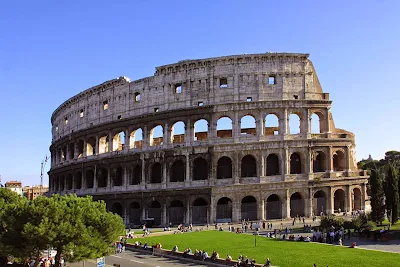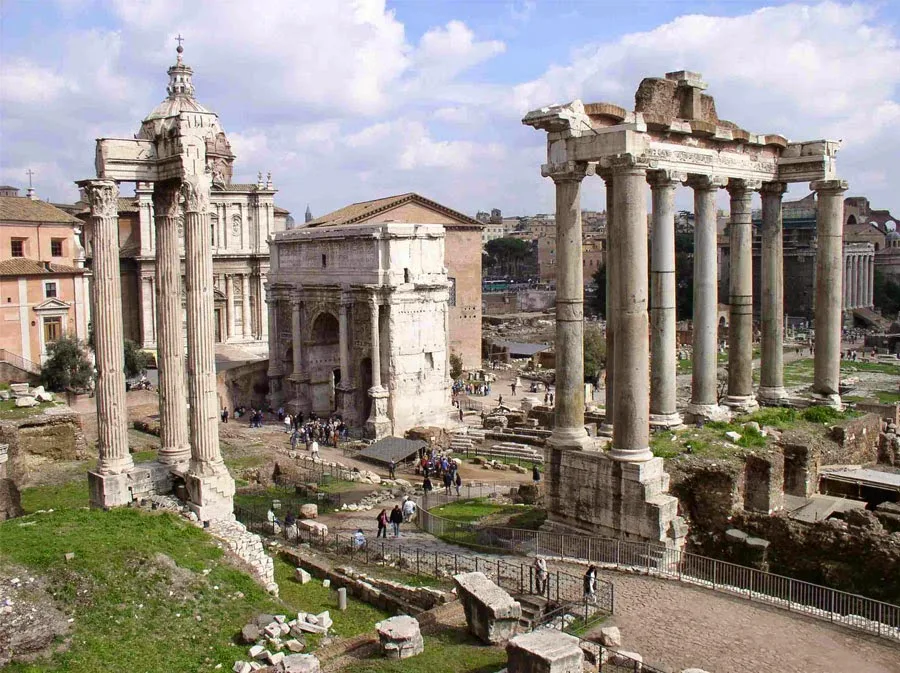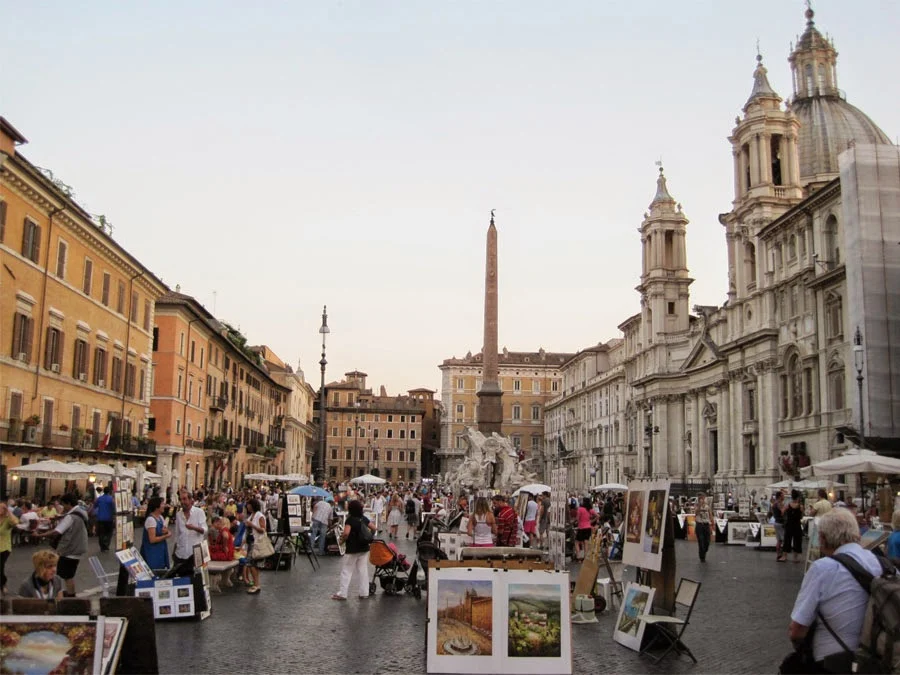Top 10 Attractions Rome ~ Having been the center of one of the world’s greatest civilizations ever, Rome has exerted a huge influence over the world in its millennium long history. With wonderful palaces, ancient churches and basilicas, grand Roman monuments, ornate statues and graceful fountains, Rome has an immensely rich historical heritage and cosmopolitan atmosphere.
1. Colosseum
The Colosseum is the largest and most famous amphitheater in the Roman world. Its construction was started by emperor Vespasian of the Flavian dynasty in 72 AD and was finished by his son Titus in 80 AD. The Colosseum was capable of holding some 50,000 spectators who could enter the building through no less than 80 entrances. The Colosseum today is a major tourist attraction in Rome with thousands of tourists paying to view, what is left of, the interior arena.
1. Colosseum
The Colosseum is the largest and most famous amphitheater in the Roman world. Its construction was started by emperor Vespasian of the Flavian dynasty in 72 AD and was finished by his son Titus in 80 AD. The Colosseum was capable of holding some 50,000 spectators who could enter the building through no less than 80 entrances. The Colosseum today is a major tourist attraction in Rome with thousands of tourists paying to view, what is left of, the interior arena.
The center of the Catholic world and a major tourist attraction, the Basilica of St. Peter is a huge church: with an interior height of 120m, the space shuttle, together with its booster rockets, could fit inside, as could the Statue of Liberty. The basilica stands on the traditional site where Peter, the apostle who is considered the first pope, was crucified and buried. Construction on the current building began in 1506 and was completed in 1615. Many famous artists worked on the complex and its surroundings: Michelangelo designed the dome while Bernini designed the great St. Peter’s Square.
3. Pantheon
One of the best preserved Roman buildings, The Pantheon was built in 126 AD as a temple for all the Roman gods. The temple has served as a Roman Catholic Church since the 7th century. The Pantheon consists of a large circular portico with three ranks of huge granite Corinthian columns. The portico opens into a rotunda which is topped with a concrete dome with a central opening: the oculus. Almost two thousand years after it was built, the Pantheon’s dome is still the largest unreinforced concrete dome in the world.
Founded by Pope Julius II in the 6th century, the Vatican Museums inside the Vatican City boasts some of the world’s most important relics. Attractions of the museums include the spiral staircase, the Raphael Rooms and the exquisitely decorated Sistine Chapel. Under the patronage of Pope Julius II, Michelangelo painted the chapel ceiling between 1508 and 1512. Today the ceiling, and especially The Last Judgment, are widely believed to be Michelangelo’s crowning achievements in painting.
Completed in 1762 to a design by Nicola Salvi, this world famous Baroque fountain features a mythological sculptural composition of Neptune, god of the sea, flanked by two Tritons. The location of the Trevi fountain marks the terminus of the ancient Aqua Virgo aqueduct and is so named on account of its position at the junction of three roads (tre vie). The fountain was the setting for an iconic scene in Fellini’s film Dolce Vita starring Anita Ekberg and Marcello Mastroianni. Since than, it has become one of the most popular Rome tourist attractions. The legend says that one who throws a coin in the fountain shall one day return to Rome.
A truly monumental stairway of 135 steps, the Spanish Steps were built with French funds between 1721‑1725 in order to link the Bourbon Spanish embassy to the Holy See with the French church, Trinità dei Monti. The steps are usually very crowded attracting tourists as well as locals who use it as a gathering place. Each year in May the steps are decorated with pink azaleas. At the foot of the Spanish Steps is the Piazza di Spagna (Spanish square) and the Fontana della Barcaccia, a sober fountain designed by Gian Lorenzo Bernini.
7. Roman Forum
Located in the small valley between the Palatine and Capitoline Hills, The Roman Forum (or Forum Romanum in Latin) was for centuries the teeming heart of ancient Rome: the site of triumphal processions and elections, venue for public speeches, and nucleus of commercial affairs. The Forum today is a sprawling ruin of architectural fragments and includes the Arches of Septimius Severus and Titus, the Temple of Antoninus Pius and Faustina and the Temple of Saturn.
Castel Sant’Angelo began life as the mausoleum of the Emperor Hadrian, built between 135 and 139 AD. Subsequent strongholds built on top of the mausoleum were in turn incorporated into a residence and castle by medieval Popes. The building was used as a prison until 1870, but now houses a museum. Among the most well known tourist attractions in Rome, film buffs will recognize it as a setting from “Angels and Demons”.
One of the most famous of Rome’s many squares, Piazza Navona was established towards the end of the 15th century, and preserves the shape of the Stadium of Domitian that once stood here. Built by Emperor Domitian in 86 AD, the stadium, which had a larger arena than the Colosseum was mainly used for festivals and sporting events. The buildings surrounding the square stand where the spectators once sat. Today, the square features no less than three magnificent fountains and is an immensely popular place to sip a cappuccino, shop, and watch street performers.
10. Campo de' Fiori
Campo de’ Fiori is a rectangular square south of Piazza Navona used as a marketplace during the day, and party central for college students and tourists at night. The name means “field of flowers” and was first given during the Middle Ages when the area was actually a meadow. Today the market is a lively place, especially when the daily vegetable market is held here (every morning except Sundays). Visitors can buy fresh produce at the market, as well as fish, meat, flowers and spices.











Posting Komentar untuk "Top 10 Attractions Rome"